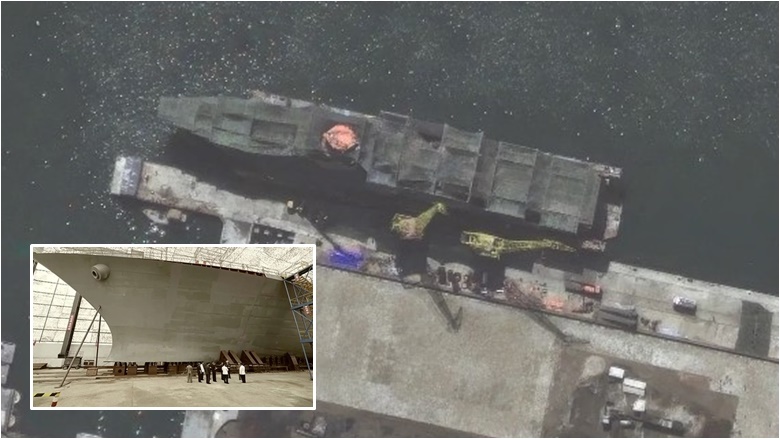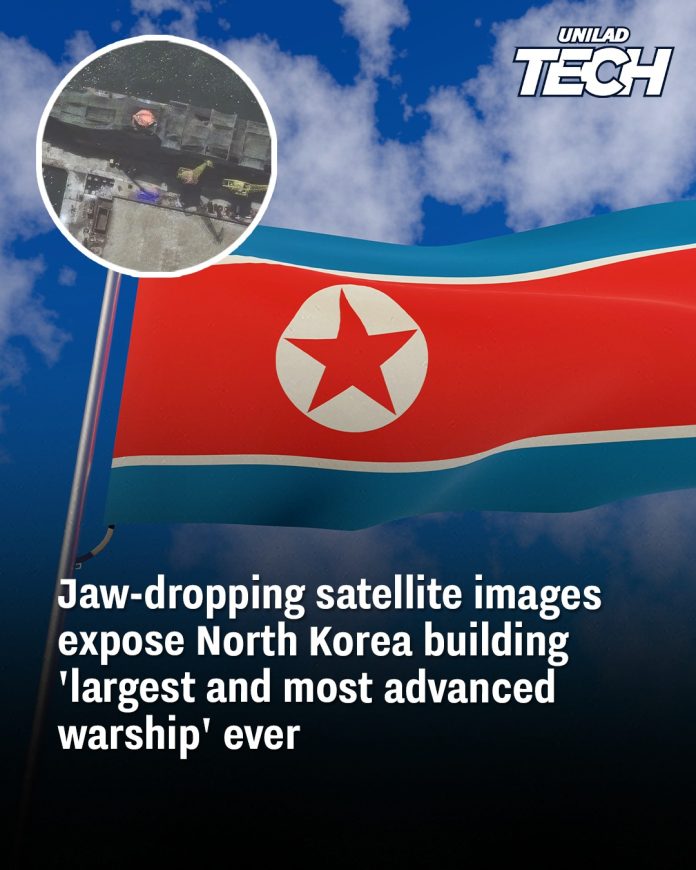Recent satellite imagery has unveiled significant developments in North Korea’s naval capabilities. Analysts have identified the construction of what appears to be the nation’s largest and most advanced warship to date—a guided missile frigate—at the Nampo Shipyard on the country’s west coast. This vessel, estimated to be approximately 140 to 144 meters in length, surpasses any previous warship built by North Korea, indicating a substantial leap in maritime ambitions.

The ship is currently in the “fitting out” phase, where internal systems are installed, and final construction touches are applied before commissioning. Notably, the frigate is covered with camouflage netting, a tactic employed to obscure details from satellite surveillance. Despite this, analysts from the Center for Strategic and International Studies (CSIS) have observed features suggesting the potential inclusion of vertical launch systems (VLS), a first for North Korean naval vessels. Such systems would enable the ship to launch a variety of missiles, including anti-ship, land-attack, and surface-to-air missiles, significantly enhancing its combat capabilities.
The construction of this frigate aligns with North Korean leader Kim Jong Un’s strategic priority to modernize the country’s navy. Traditionally, North Korea’s naval forces have focused on submarines and coastal operations due to limited resources. However, the development of this large surface combatant suggests an ambition to extend operational reach and project power more effectively in regional waters.
Analysts have also noted that the ship’s design may include a helicopter landing pad and hangar, further expanding its operational versatility. If confirmed, this would mark only the second time the Korean People’s Navy has fielded a helicopter-capable warship.
While the completion date and full operational capabilities of the frigate remain uncertain, its construction represents a notable advancement in North Korea’s naval development. The integration of modern systems such as VLS and potential helicopter facilities indicates a shift towards more sophisticated maritime assets. However, experts caution that the true effectiveness of the vessel will depend on the successful integration of complex technologies and systems, areas where North Korea has historically faced challenges.

This development has implications for regional security dynamics, as neighboring countries and international observers monitor North Korea’s expanding military capabilities. The introduction of such an advanced warship could alter the strategic balance in the region, prompting discussions on maritime security and defense preparedness among affected nations.
In summary, the construction of North Korea’s largest and most advanced warship to date signifies a significant step in the country’s naval modernization efforts. While challenges remain in terms of technology integration and operational readiness, the project underscores Pyongyang’s intent to enhance its maritime power and influence in the region.

















